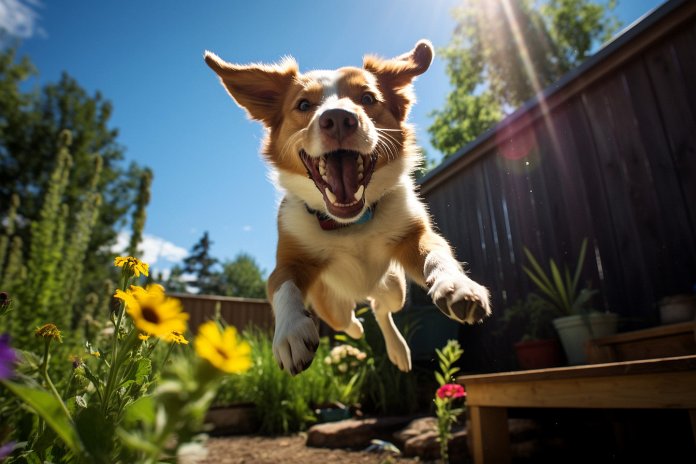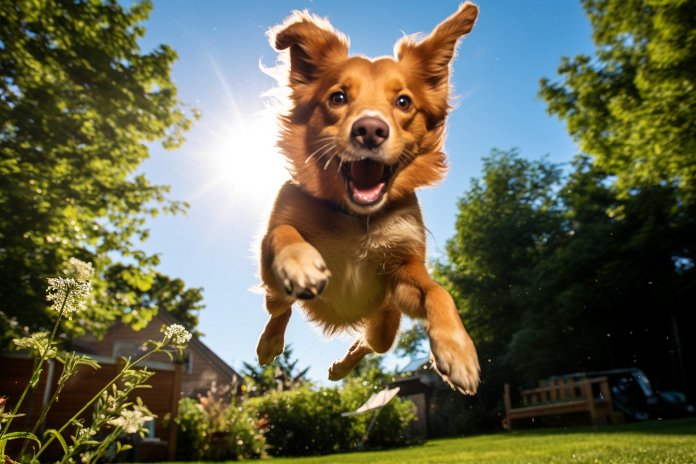
We often wonder what our dogs are feeling and if they can actually experience emotions like excitement. Surprisingly, dogs can feel a wide range of emotions, including love, fear, sadness, and anger. So when your dog yips, bounces, or wags its tail, it really does mean they are excited and happy to be around you. There are many things we can do to keep our dogs happy and excited, and by understanding their body language, we can better interpret their emotions.
Signs Your Dog Is Excited
Although dogs can’t speak to us, they communicate through their body language. A happy and excited dog will have relaxed eyes, with a soft gaze and smooth brow. Their ears may be relaxed or back, and their mouth may be open, with their tongue hanging out or rolling around. Their body will be relaxed, with a high or wagging tail, and they may even flip over on their belly or “play bow” to show their excitement. Some dogs may bark or whine when they’re happy or excited.
Body Language
Some signs that your dog is excited include barking, wagging their tail, hugging, stomach flipping, wiggling, tongue hanging, and play bowing. Other signs may include barking, crying, or whining in happiness, running around the house, relaxed facial expression, ears forward or pressed back against their head, and puppy smiles.
The History Behind Dogs and Excitement
Dogs have been domesticated by humans for over 10,000 years, so it’s no surprise that they get excited when they see us. They have learned to depend on us for entertainment, food, and love, and have picked up on some of our behaviors when we’re excited. Dogs may jump up and down, bark, or make seal noises to show their happiness.
The Science Behind Excitement in Dogs
Studies have shown that dogs have the mental and emotional capabilities of a 2 1/2-year-old child. They can feel emotions like excitement, distress, contentment and happiness, disgust, fear, anger, joy, suspicion, and affection or love. However, they are unable to feel emotions like pride, shame, guilt, and contempt.
Training Your Dog to Be Excited
You can’t train your dog to feel certain emotions, but you can train yourself to recognize excitement in your dog. Take note of their behavior when you get home, as that is usually when they are most excited. If your dog exhibits naughty behavior when they’re excited, you can use positive reinforcement to train them. Give treats when they behave well and gently reprimand them when they misbehave, but be patient and don’t go too far.
“Understanding your dog’s excitement is the key to keeping them happy and tail-waggingly excited!”

Tips & Things to Know
1️⃣ Understand your dog’s body language: Pay attention to your dog’s facial expressions, body posture, and vocalizations to determine if they are excited. Relaxed eyes, wagging tail, open mouth, and playful behavior are all signs of excitement.
2️⃣ Recognize your dog’s specific responses to excitement: Each dog may have different ways of expressing excitement. Observe how your dog reacts when you come home or during other exciting situations to understand their unique behaviors.
3️⃣ Use positive reinforcement for training: If your dog exhibits undesirable behaviors when they are excited, such as jumping or accidents, use positive reinforcement to redirect their behavior. Reward them for good behavior and gently discourage the unwanted actions.
Frequently Asked Questions, Answered ✅
1. Can dogs feel excitement?
Yes, dogs have the capability to feel excitement along with a range of other emotions including love, fear, sadness, and anger.
2. How can you tell if a dog is excited?
Some signs that a dog is excited include relaxed eyes with a soft gaze, open mouth with tongue hanging out or rolling around, relaxed body posture, high wagging tail, flipping over on their belly, “play bowing”, barking or whining, and running around the house.
3. Why do dogs get excited when they see their owners?
Dogs have been domesticated for thousands of years and have learned to depend on humans for entertainment, food, and love. They have picked up on human behaviors and often mimic jumping up and down or barking when they are happy.
4. What emotions can dogs feel?
Dogs can feel emotions such as excitement, distress, contentment, happiness, disgust, fear, anger, joy, suspicion, and affection or love. However, studies have shown that most dogs are unable to feel emotions like pride, shame, guilt, and contempt.
5. How can you train your dog to manage their excitement?
You cannot train your dog to feel certain emotions, but you can train yourself to recognize when your dog is excited. Positive reinforcement is the best way to manage their behavior. Give them treats when they exhibit desired behaviors and gently reprimand them when they behave poorly.